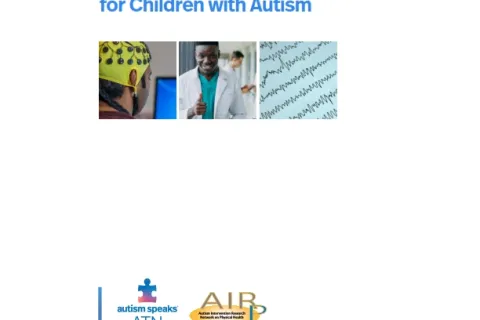ATN/AIR-P Having an Electroencephalogram (EEG): A Guide for Providers
EEGs can be difficult for all people, but especially for children and adults with autism.
This guide will help providers make the EEG process easier and more comfortable for autistic patients
Sections include:
- Why does an autism diagnosis matter when a child needs to have an EEG?
- How can staff and families collaborate to improve the EEG procedure?
- Understanding sensory issues and how to help children with ASD cope
- Understanding challenging or aggressive behavior
"These materials are the product of on-going activities of the Autism Speaks Autism Treatment Network, a funded program of Autism Speaks. It is supported by cooperative agreement UA3 MC 11054 through the U.S. Department of Health and Human Services, Health Resources and Services Administration, Maternal and Child Health Research Program to the Massachusetts General Hospital. Its contents are solely the responsibility of the authors and do not necessarily represent the official views of the MCHB, HRSA, HHS, or Autism Speaks."
Complete the form below to access the Tool Kit
If you are not able to see the form, click here.
By submitting this form you will receive periodic communications from Autism Speaks. You can unsubscribe at any time.

Our Autism Response Team (ART) is specially trained to connect people with autism, their families, and caretakers to information, tools, and resources.



